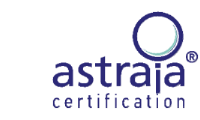WHAT IS HACCP?
HACCP (Hazard Analysis and Critical Control Points) is a management system that includes a comprehensive analysis of hazards that can endanger food safety. The principles underlying the HACCP system requirements have been taken from the Codex Alimentarius document approved by the FAO Commission/WHO in 1993 and revised in June 1997 as the most economically effective approach to ensure the food safety. The Codex Alimentarius documents are recognized as a reference for each Member State’s national requirements in the WTO Agreement on the Application of Sanitary and Phytosanitary Measures and their national legislations must be adapted accordingly. This Codex has also been included in the Council Directive 93/43/EEC of 14 June 1993 on the hygiene of foodstuffs.
After the implementation of the HACCP system, the food producers may ask the certification body for the verification of conformity of their implemented HACCP with the requirements of the Slovak food legislation. The purpose of this verification is to confirm, by an independent third party, that producers have fair attitude and sufficient care to produce safe food by correctly and effectively implemented and maintained HACCP system.
The complex HACCP system shall include:
1. Risk analysis of the technological process of food products production with the aim to:
- identify the dangers of possible food contamination and the possible risks of their occurrence at all stages of the technological process of food production, including food serving in canteens;
- identify the critical contamination control points for the food production and set the limit values for these points;
- establish a regime for monitoring and controlling of identified hazards.
2. The HACCP plan describing, above all, the identified hazards, rules for their management (prevention), control, monitoring and corrective actions in the case of abberations from the critical limits;
3. The procedures including responsibilities for:
- the management of HACCP plans and other documentation and records;
- the regular training and education of employees about principles, realization of relevant activities and processes of the HACCP system;
- the realization of the corrective and preventive actions;
- the verification of the effectiveness of the implemented HACCP system;
- the regular review of the functionality and the performance of the HACCP system by management and the consecutive consideration of the need for changes;
- fully implementing these procedures and the HACCP plan;
- the hygiene regime and the sanitation program of every single operation;
- the definition of the organization’s policy and the objectives for the health products harmlessness.


